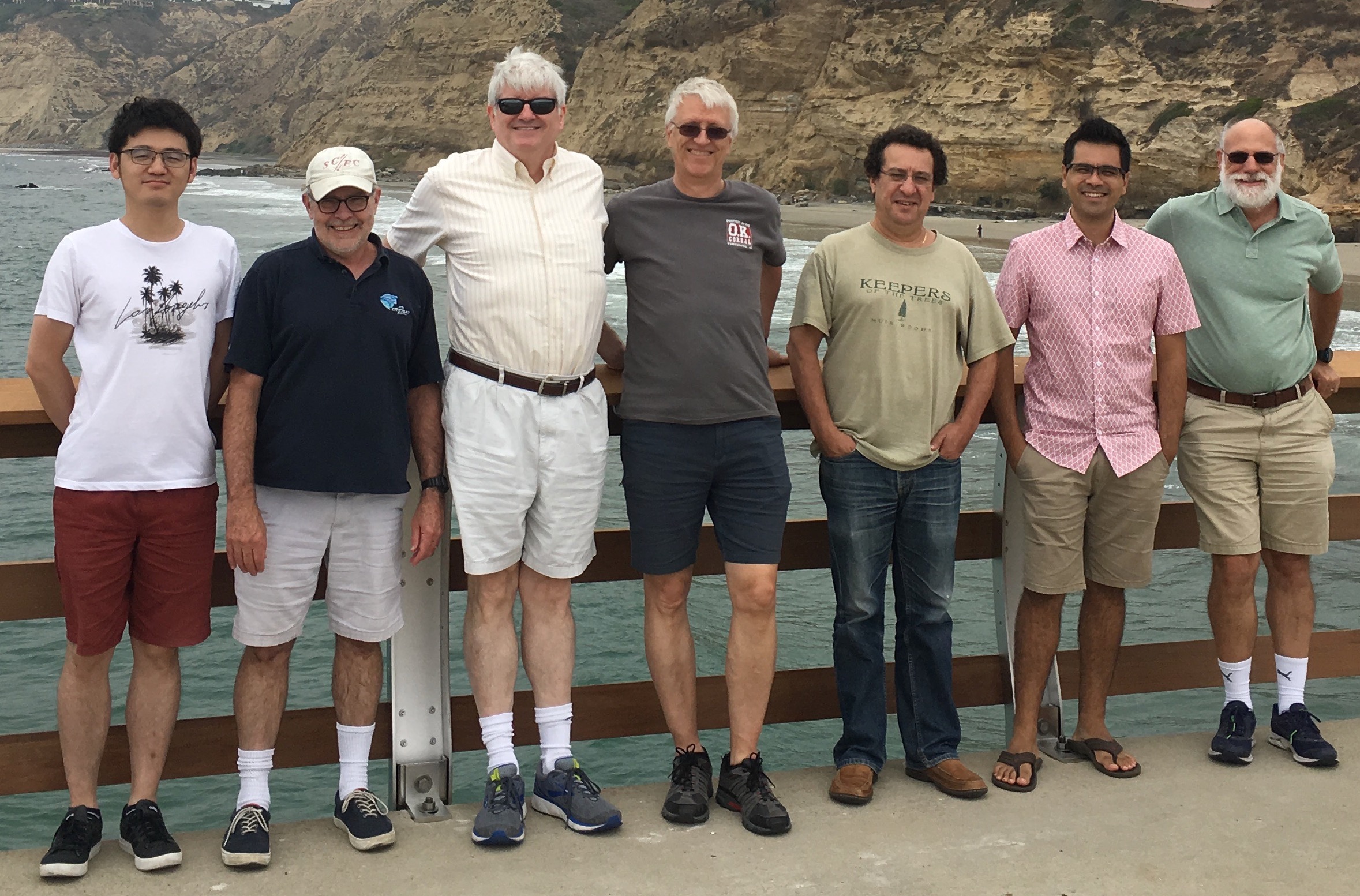GMT Cookbook¶
Note
The GMT cookbook is for GMT 6 modern mode only. Looking for the classic mode cookbook? Since classic mode commands haven’t changed since GMT 5, please visit the GMT 5 cookbook instead.
Pål (Paul) Wessel1, Walter H. F. Smith2, Remko Scharroo3, Joaquim F. Luis4, Leonardo Uieda5, Florian Wobbe6, Dongdong Tian7
- SOEST, University of Hawai’i at Manoa
- Laboratory for Satellite Altimetry, NOAA/NESDIS/STAR
- EUMETSAT, Darmstadt, Germany
- Universidade do Algarve, Faro, Portugal
- University of Liverpool, UK
- Sea and Sun Technology, Germany
- Michigan State University

Dongdong Tian, David Sandwell (Steering Committee Chair), Walter H.F. Smith, Paul Wessel, Joaquim Luis, Leo Uieda, and Dave Caress (Steering Committee Member) at the GMT Developer Summit in La Jolla, California, during July 29–August 2, 2019.
- 1. Preface
- 2. Introduction
- 3. General Features
- 4. Standardized command line options
- 5. GMT Coordinate Transformations
- 6. GMT Map Projections
- 7. GMT Supplemental Packages
- 8. GMT File Formats
- 9. Including GMT Graphics into your Documents
- 10. Predefined Bit and Hachure Patterns in GMT
- 11. Chart of Octal Codes for Characters
- 12. PostScript Fonts Used by GMT
- 13. Color Space: The Final Frontier
- 14. Filtering of Data in GMT
- 15. GMT on non-UNIX Platforms
- 16. Of Colors and Color Legends
- 17. Custom Plot Symbols
- 18. Annotation of Contours and “Quoted Lines”
- 19. The GMT Vector Data Format for OGR Compatibility
- 20. GMT Modern Mode One-line Commands